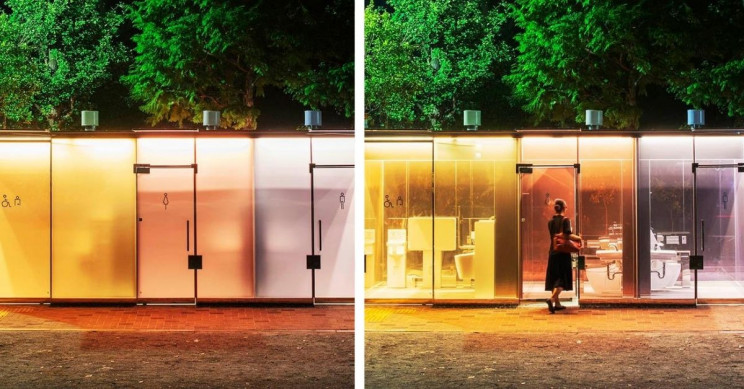At first, it’s hard to believe how a public bathroom with transparent walls could be a practical idea, as it won’t help ease anyone’s anxiety. However, designed by some of Japan’s most innovative architects, the projects for multiple restrooms are all unique in their way. Build on different locations, each of them aims to prove their practicality and modern design.
The Shibuya City government and the Nippon foundation in a collaborated effort are to renovate seventeen public bathrooms in a project titled as ‘The Tokyo Toilet Project.’
Japan is one of the cleanest countries in the world, but still, the bathrooms for public use are held dark, dirty, smelly, and above all are considered, “scary.” The renovation project originated from the lack of public toilet uses due to their devastated and inhumane conditions, and the locals not finding them effectively useful.
The toilets designed by sixteen different artists differ in design, and each is unique to its location. Most interesting of all models is the one with smart walls, which changes from transparent to opaque depending on if it’s occupied or not. At night, you can see colors light up the surroundings. They are like giant fireflies with no plan of hiding. The project is also termed as sixteen designers and seventeen locations, respectively.
There is also another version of these cabinets that differ in color. Even though the locations are different, the designer responsible for these extensive renovations is the same. We can witness the interior design is way more modern than that of a basic, plastic installed cabinet; the same goes for the exterior design.
Located in Haru-no-Ogawa Community Park are the cyan, lime green, and blue painted ones. The warm pastel-like versions are located in Yoyogi Fukamachi Mini Park.
Some of the designs have more concrete constructions made up of beige separators. The design, by Masamichi Katayama, is reportedly originated from kawaya, old huts built over rivers in the prehistoric Jomon period.
The beige walls pave the way towards three different toilets for men, women, and unisex, welcoming all in a well inclusive public facility.

